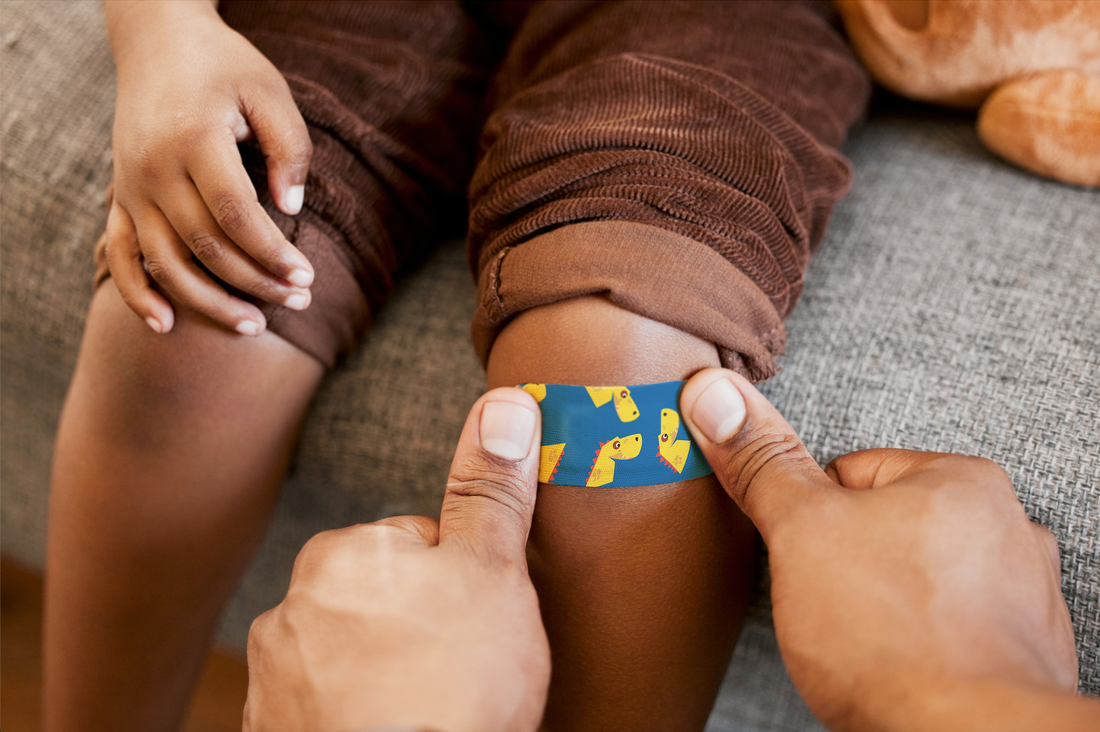As an adult or parent, it's normal to worry when your child, partner, or yourself has a wound. One of the questions often asked is: is wound discharge a problem? Let's explore together what wound discharge is, how it forms, and, importantly, how to treat it.
What is wound fluid?
When you see a wound, you've probably noticed a clear or sometimes slightly colored fluid coming out. This is wound fluid. But what exactly is wound fluid? Wound fluid, also called exudate, is a fluid produced by the body to heal wounds. It contains white blood cells, proteins, and other important substances that aid healing.
Wound fluid can vary in color and consistency, depending on the stage of healing and the severity of the wound. It's usually a sign that your body is working hard to repair the wound. But when should you be concerned? And is wound fluid a problem?
How does wound fluid actually develop?
When your skin is damaged, your body activates a series of processes to heal the wound. One of the first responses is the release of wound fluid. This fluid then helps flush away bacteria and other harmful substances and keep the wound clean.
The production of wound fluid is a normal bodily response during the healing process. The amount and type of fluid vary depending on the size and depth of the wound. Sometimes a wound can produce a lot of fluid, which is uncomfortable. Is this cause for concern? Not always, but it's important to know when to seek help.
How to stop wound drainage?
Sometimes it seems like a wound won't stop producing fluid. Stopping the discharge isn't always easy, especially if you don't know what to do. Fortunately, there are some simple steps you can follow to reduce the discharge.
- Keep the wound clean and dry. Use a soft cloth to blot away excess moisture.
- Change the dressing regularly to keep the wound dry and prevent infection.
- If necessary, use an absorbent dressing that is specially made to absorb wound fluid.
If the wound fluid doesn't subside after a few days, it's wise to consult a doctor. They will determine whether there's an infection or another problem and will help you further.
Excessive wound fluid: healing or infection
What should you do if a wound is leaking a lot? It's unpleasant to see a lot of fluid coming from a wound, especially in your child. It can even be frightening. Excessive drainage indicates active healing, but it can also be a sign of infection!
Therefore, watch out for signs such as redness, swelling, and an unpleasant odor. These symptoms indicate an infection. In that case, it's important to seek medical attention. Is wound discharge a concern in this situation? Yes, especially if it's accompanied by other symptoms.
Moisture in the wound promotes healing
Moisture in a wound is a normal and important part of the healing process. This moisture helps keep the wound moist, which in turn promotes healing. It's important not to let the wound dry out, as dehydration hinders healing and leads to scar formation.
Therefore, keep the wound covered with a clean dressing and change it regularly. This helps maintain an ideal healing environment and prevent infection. Moisture in the wound also helps reduce pain and improve mobility.
Treating a moist wound
How do you manage a wound with a lot of drainage? It's important to know how to properly treat a moist wound. Use an absorbent dressing to absorb excess fluid and keep the wound clean and dry.
Good wound care is essential for fast and effective healing. Keep the wound clean, change the dressing regularly, and watch for signs of infection. If in doubt, always consult a doctor to ensure you provide the best care.
Care for every adventurer
Wound discharge is usually a normal part of the healing process and doesn't necessarily have to be a cause for concern. By knowing what wound discharge is, how it forms, and how to stop and treat it, you'll be better prepared to care for your child if they have a wound. So, is wound discharge a problem? Usually not, but it's always good to remain vigilant and, if in doubt, consult a professional.
At Dappr, we understand that wound healing requires more than just clinical care; it also requires a little fun and comfort. That's why Dappr offers not only functional products to support healing, such as special bandages that effectively absorb wound fluid, but also Dappr plasters with fun and colorful designs. These are specially designed to keep little ones and adults happy and active during their recovery.
Explore our fun products and make the recovery process a little less daunting for your little adventurer, your partner, and yourself with Dappr care products.
